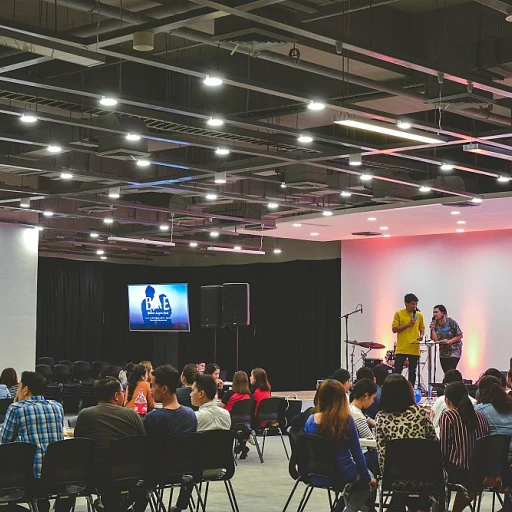
Understanding Backfilling: What It Means and Why It Matters
The Importance of Backfilling in Today's Workforce
Navigating the dynamic world of workforce management requires an understanding of backfilling, a process often overlooked yet crucial in maintaining productivity. Backfilling refers to the act of filling a vacant position with either a new hire or an internal employee. This concept becomes vital when a role becomes suddenly vacant due to employee promotion, departure, or other reasons. Backfilling not only helps fill vacant positions but also ensures that businesses continue to operate smoothly without a significant loss in productivity. Organizations that have an effective backfill plan in place can turn potential disruptions into opportunities for internal promotion and professional development, helping to nurture their existing talent pool. Utilizing current employees through succession planning or cross-training can achieve short term solutions to immediate vacancies, allowing time for the organization to effectively hire the right external candidate. This method not only picks up the slack left by sudden vacancies but also provides team members with the chance to acquire new skills and responsibilities, thereby fostering an environment of growth and learning. Understanding the nuances of backfilling, as part of a broader workforce strategy, underscores its importance in sustaining an efficient hiring process. Companies that prioritize this approach are better positioned to handle the ebb and flow of team dynamics, thus ensuring that the right skills are always in place to support organizational objectives. For more insights on how learning strategists play a pivotal role in candidate sourcing, you can read more here.Identifying the Right Candidates: Key Qualities to Look For
Essential Attributes in Identifying Right Candidates
When aiming to backfill a role in an organization, it is crucial to identify candidates who possess the right skills and align with the job description. Understanding the nuances of the vacant position will guide the selection process, ensuring you are searching for the most suitable talent to integrate into your team.
- Skills and Experience: Candidates should have the necessary skills to perform in the position backfill effectively. Experience in similar roles can be a significant advantage, allowing a smoother transition and minimizing downtime.
- Cultural Fit: Consider whether the individual will mesh well with your current team members. A candidate who shares the values of the organization and gets along with other employees is likely to be more engaged and productive.
- Adaptability and Learning Agility: The ability to pick up new skills quickly and adapt to changing demands is particularly important in dynamic workplaces. Internal candidates who embrace professional development opportunities can often make excellent choices for backfilling positions.
- Problem-Solving Abilities: Effective problem-solving skills will help navigate challenges encountered in the role and contribute positively to team dynamics.
- Potential for Growth: Look for candidates who not only fit the current position but also show potential for progression. A well-laid succession planning process ensures that the employee can grow within the organization.
Navigating the complexities of staffing effectively and efficiently involves more than just filling a role; it involves selecting someone who can evolve with the team's needs over time.
Effective Sourcing Strategies for Backfilling
Strategies to Efficiently Identify Suitable Candidates
Effective sourcing strategies are paramount when it comes to backfilling a vacant position, especially if your aim is to fill the role with talent that perfectly fits within the team and organization. Here are some best practices to consider:- Enhance Internal Mobility: Encouraging internal applications not only speeds up the hiring process but also promotes employee promotion and professional development. Current employees who are familiar with the organization’s culture might adapt more easily to their new roles. Implementing a strategic backfill plan can help identify which positions can be filled internally, thus saving time and resources.
- Leverage Professional Networks: Utilize platforms and industry networks to connect with potential candidates. Reaching out through established professional relationships can yield high-quality applicants. This strategy is particularly effective in filling positions that require specific skills where the candidate’s network can recommend suitable individuals.
- Utilize Technology: Technology can play a crucial role in streamlining the backfilling process. There are many tools available that will help in managing job postings and tracking applicant status, making the hiring process more efficient. When these technologies are aligned with your organization’s needs, they significantly enhance the effectiveness of sourcing efforts.
- Offer Referral Incentives: Encourage existing team members to refer candidates from their networks by offering referral bonuses. Such incentives can motivate employees to engage in the hiring process actively. This approach also ensures that any referred candidates align with the company culture and expectations.
- Detailed Job Descriptions: Crafting clear and comprehensive job descriptions is vital. This will ensure candidates fully understand the role they are applying for and are aware of the necessary skills and experience needed. Transparent job descriptions mitigate the risk of mismatched expectations.
- Succession Planning and Cross-training: Succession planning ensures there's always a backup. A well-structured backfill plan that includes cross-training current employees allows for a smooth transition when roles need to be filled, picking up the slack without hindrance to the ongoing work.
Challenges in Backfilling and How to Overcome Them
Addressing Common Backfilling Challenges
In the intricate process of backfilling, several challenges surface. Addressing these with clear strategies can streamline the transition.- Skill Gaps and Training Needs: When a position becomes vacant, the immediate concern is the skill gap it leaves within the team. Organizations often face difficulties in finding a suitable employee who can take over the role seamlessly. Ensuring the team can fill the position effectively might require cross training and upskilling of current employees. This proactive approach aids in professional development and helps pick up the slack left by the exiting employee.
- Time Constraints: A significant pressure in the backfilling process is managing time effectively. The longer a position remains unfilled, the more strain it places on the team members who have to absorb additional responsibilities. To tackle this, implementing a structured backfill plan, including succession planning and having a pool of potential candidates ready, can mitigate such risks.
- Maintaining Team Morale: With any backfilling situation, especially those involving employee promotions or transitions, maintaining high team morale is crucial. Regular communication with team members about backfill plans and involving them in the decision-making process can alleviate concerns, ensuring the team remains cohesive and motivated.
- Clarity in Job Descriptions: Vague job descriptions complicate the backfilling process. When trying to identify talent to fill positions, clarity in the job description is essential to attract suitable candidates. Detailing the skills and expectations can expedite the hiring process, helping organizations avoid prolonged vacancies.
- Internal vs. External Hiring Dilemmas: Deciding between promoting an existing employee or hiring externally can be tricky. While internal promotions can boost morale and reduce adjustment time, external candidates can bring in fresh perspectives and ideas. Balancing these options requires a careful assessment of the organization’s long-term goals and immediate needs.












